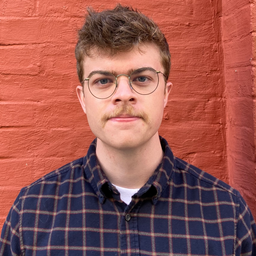
Benjamin Peterson
Ben Peterson (he/him/his) is a queer settler raised in Saint John, New Brunswick. Ben holds a BA in Architectural History and Theory and Law from Carleton University and an MA in Art History from Concordia University. Ben has worked in development planning and built heritage. He will be matriculating into Dalhousie University's Doctor of Medicine program in August of this year.
Sessions in which Benjamin Peterson participates
Saturday 28 May, 2022
Queerness and lesbian, gay, bisexual, transgender, and queer histories are a part of architectural and historical production. Yet, these perspectives do not enjoy the same prominence as heterocentric narratives. This session aims to interrogate all aspects of gender and sexual identity related to the Canadian built environment. It seeks to scrutinize the successes and failures of architecture, architectural history, and heritage in accommodatin...
Sessions in which Benjamin Peterson attends
Wednesday 25 May, 2022
We propose a rich and colorful inaugural evening, in a mythical place: Dawson Hall, behind St James United Church (1887-1889, Alexander Francis Dunlop, arch.), known as the "Montreal Methodist Cathedral" - with 2000 seats, it was the largest Methodist church in Canada when it was built. Designated a National Historic Site of Canada in 1996, it escaped demolition in 1980 when it was classified as a historic monument, and then escaped extinction thanks to an ambitious restoration project, in...
Thursday 26 May, 2022
In recognition of the fact that Canadian practitioners, scholars, and students of architecture think, work, and act globally, this session invites submissions that are geographically unconstrained. The session welcomes case studies or analyses that illuminate how the transnational flow of ideas, people, and capital has changed the global built environment, including the multi-directional nature of exchanges between the so- called developing and...
The cultural landscapes of migration are an inextricable part of Canada’s urban, social and national identity. However, recent debates about immigration, diversity, multiculturalism and the visibility of cultural symbolisms raise controversial, often polarized public opinions. Policies of migration have accentuated divisive interpretations and legitimized isolation among multiple cultural communities, instead of promoting dialogue. This session...
The cultural landscapes of migration are an inextricable part of Canada’s urban, social and national identity. However, recent debates about immigration, diversity, multiculturalism and the visibility of cultural symbolisms raise controversial, often polarized public opinions. Policies of migration have accentuated divisive interpretations and legitimized isolation among multiple cultural communities, instead of promoting dialogue. This session...
The cultural landscapes of migration are an inextricable part of Canada’s urban, social and national identity. However, recent debates about immigration, diversity, multiculturalism and the visibility of cultural symbolisms raise controversial, often polarized public opinions. Policies of migration have accentuated divisive interpretations and legitimized isolation among multiple cultural communities, instead of promoting dialogue. This session...
Roger D'Astous is one of the most important Canadian architects of the 20th century. A student of Frank Lloyd Wright, he worked all his life to establish a northern architecture. This rebellious and flamboyant artist was a superstar of the sixties, then fell into disgrace before being reborn in the twilight of the century. Author of two Montreal icons, the Château Champlain Hotel and the Olympic Village for the 1976 Games, his residences are sensual works of art and his churches are strang...
Friday 27 May, 2022
Architectural history and heritage have historically been defined by superlatives. Vernacular traditions and local histories, on the other hand, have often been pushed to the margins or overlooked. These everyday spaces and places are often relegated to the quotidian, and perceived as unworthy of recognition. The COVID-19 pandemic, however, has changed our daily lives, and in many cases, our values. Now, we have been forced to see the everyday in a new light. What might this n...
Saturday 28 May, 2022
Ramps and curb cuts often first come to mind when one thinks about how the built environment is designed for people with disabilities. Accessible designs, however, need to account for individuals that may not be restricted in terms of mobility but live with other impairments such as blindness or neurological and cognitive conditions. Ideally, an architectural design will allow all users to feel as though they are included and not judged. This s...
We offer a unique experience for the closing dinner of this conference in Montreal, in the former U.S. pavilion of Expo'67 - the most popular of the exhibition, with 5.3 million visitors: the "geodesic dome" designed by architect Buckminster Fuller (1895-1983) with the collaboration of Shoji Sadao. The self-supporting steel honeycomb structure, covered with a polymer skin, was burned down in 1976 and redeveloped in the 1990s, according to the plans of architect Éric Gauthier, into an envir...